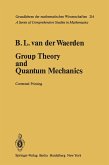The use of symmetries and conservation laws in the qualitative description of dynamics has a long history going back to the founders of classical mechanics. In some instances, the symmetries in a dynamical system can be used to simplify its kinematical description via an important procedure that has evolved over the years and is known generically as reduction. The focus of this work is a comprehensive and self-contained presentation of the intimate connection between symmetries, conservation laws, and reduction, treating the singular case in detail.
The exposition reviews the necessary prerequisites, beginning with an introduction to Lie symmetries on Poisson and symplectic manifolds. This is followed by a discussion of momentum maps and the geometry of conservation laws that are used in the development of symplectic reduction. The Symplectic Slice Theorem, an important tool that gave rise to the first description of symplectic singular reduced spaces, is also treated in detail, as well as the Reconstruction Equations that have been crucial in applications to the study of symmetric mechanical systems. The last part of the book contains more advanced topics, such as symplectic stratifications, optimal and Poisson reduction, singular reduction by stages, bifoliations and dual pairs. Various possible research directions are pointed out in the introduction and throughout the text. An extensive bibliography and a detailed index round out the work.
This Ferran Sunyer i Balaguer Prize-winning monograph is the first self-contained and thorough presentation of the theory of Hamiltonian reduction in the presence of singularities. It can serve as a resource for graduate courses and seminars in symplectic and Poisson geometry, mechanics, Lie theory, mathematical physics, and as a comprehensive reference resource for researchers.
The exposition reviews the necessary prerequisites, beginning with an introduction to Lie symmetries on Poisson and symplectic manifolds. This is followed by a discussion of momentum maps and the geometry of conservation laws that are used in the development of symplectic reduction. The Symplectic Slice Theorem, an important tool that gave rise to the first description of symplectic singular reduced spaces, is also treated in detail, as well as the Reconstruction Equations that have been crucial in applications to the study of symmetric mechanical systems. The last part of the book contains more advanced topics, such as symplectic stratifications, optimal and Poisson reduction, singular reduction by stages, bifoliations and dual pairs. Various possible research directions are pointed out in the introduction and throughout the text. An extensive bibliography and a detailed index round out the work.
This Ferran Sunyer i Balaguer Prize-winning monograph is the first self-contained and thorough presentation of the theory of Hamiltonian reduction in the presence of singularities. It can serve as a resource for graduate courses and seminars in symplectic and Poisson geometry, mechanics, Lie theory, mathematical physics, and as a comprehensive reference resource for researchers.
Dieser Download kann aus rechtlichen Gründen nur mit Rechnungsadresse in A, B, BG, CY, CZ, D, DK, EW, E, FIN, F, GR, HR, H, IRL, I, LT, L, LR, M, NL, PL, P, R, S, SLO, SK ausgeliefert werden.
"...The present book offers a thorough description of [reduction] theory and a unified treatment of most of its developments and generalizations, with a particular emphasis on those due to the authors. It contains many important results which cannot be found in other books, and covers a large part of the recent developments related to momentum maps and reduction. This book fills a need and will be appreciated by specialists as well as by persons new to the field...."
-MATHEMATICAL REVIEWS
-MATHEMATICAL REVIEWS









